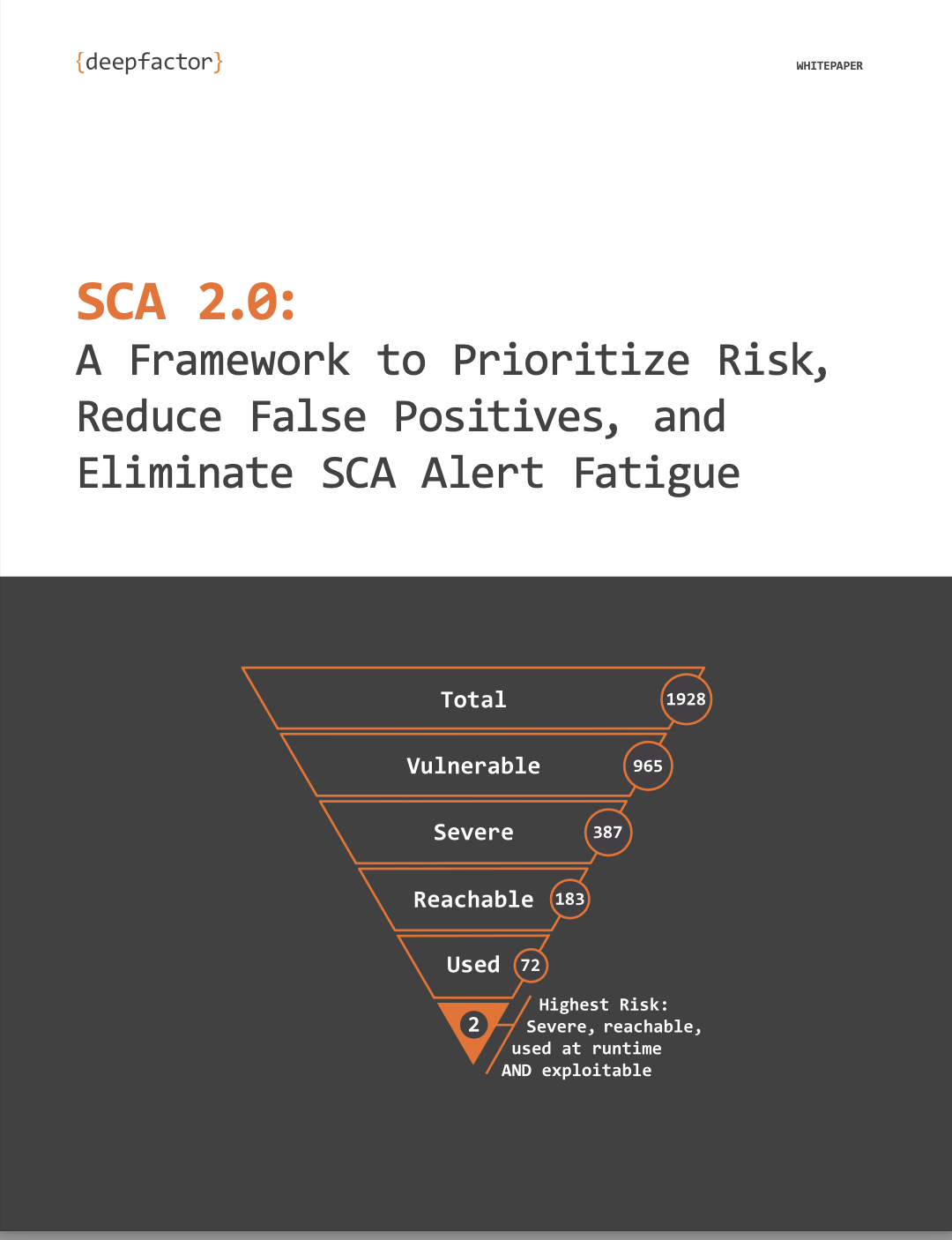What are False Positives?
The term “false positives” refers to instances where benign activities or items are incorrectly identified as malicious vulnerabilities by security systems. This phenomenon poses significant challenges, particularly as organizations strive to maintain robust security postures while minimizing disruptions to legitimate operations. False positives occur when a security system mistakenly flags non-threatening activities as threats. This can happen for various reasons, including overly sensitive detection mechanisms, misconfigured security policies, or the inherent complexity of distinguishing between normal and anomalous behaviors in diverse environments. Software composition analysis tools often generate false positives, flagging components that may have vulnerabilities but are not actively used or exploitable. Understanding and managing false positives is crucial for maintaining an effective and efficient cybersecurity strategy.
Impact on Security Operations
The impact of false positives on security operations can be significant. One major effect is the drain on both security and engineering resources. Each false positive requires investigation, consuming valuable time and resources that could be better spent addressing genuine threats. This can lead to a decrease in overall security effectiveness, as the attention of security personnel is diverted from real issues. Additionally, the constant stream of false alarms can lead to alert fatigue, a condition where security personnel become desensitized to alerts, increasing the risk of real threats being overlooked. Alert fatigue can have serious consequences, as it may result in slower response times or missed detections of actual security incidents.
Operational disruptions are another consequence of false positives. Unnecessary actions taken in response to false positives, such as quarantining files or blocking legitimate activities, can disrupt business operations and impact productivity. This can be particularly problematic in environments where uptime and availability are critical, such as in financial services or healthcare. The need to constantly address false positives can also strain the relationship between security teams and other departments, as employees may become frustrated with what they perceive as unnecessary interruptions to their work.
The lack of contextual information provided by SCA tools can also contribute to alert fatigue. Developers are frequently inundated with alerts lacking proper details on the impact, severity, relevance, or remediation information for the identified vulnerabilities. This forces developers to spend significant time investigating each alert individually, increasing the time required to both invalidate false positives and remediate real, critical vulnerabilities. While there may be scant information available in the vulnerability disclosure from which the SCA tool can offer insight, continually offering no insight at all (eg, “inactionable” alerts) can also desensitize developers.
Strategies for Minimizing False Positives
To effectively manage and reduce false positives, organizations can employ several strategies. One important approach is fine-tuning detection systems. Regularly calibrating and fine-tuning detection systems to ensure they accurately differentiate between benign and malicious activities can significantly reduce false positives. This may involve adjusting sensitivity levels, refining detection rules, and incorporating new data sources to improve the accuracy of threat detection.
Implementing contextual analysis is another effective strategy. By leveraging contextual analysis, security systems can gain a better understanding of the broader context of activities, allowing them to make more informed decisions about potential threats. This involves analyzing factors such as the source and destination of network traffic, the behavior of users, and the nature of the data being accessed. By considering these contextual factors, security systems can more accurately identify genuine threats and reduce the occurrence of false positives.
Adopting machine learning and artificial intelligence technologies can also play a crucial role in minimizing false positives. Machine learning algorithms can improve detection accuracy over time by learning from historical data and identifying patterns that distinguish false positives from true threats. These algorithms can be trained to recognize the subtle differences between normal and malicious behavior, enabling more precise threat detection. Additionally, machine learning can help to automate the analysis of large volumes of data, reducing the burden on human analysts and allowing them to focus on more complex and high-priority tasks.
Continuous Monitoring and Feedback
Continuous monitoring and feedback are essential for maintaining the effectiveness of false positive reduction strategies. Establishing a continuous feedback loop where security teams review and adjust detection mechanisms based on the outcomes of investigations can enhance the system’s accuracy. This iterative process allows organizations to continually refine their detection systems, incorporating new insights and adapting to changing threat landscapes. By regularly reviewing and updating detection rules and policies, organizations can ensure that their security systems remain effective and responsive to emerging threats.
Balancing Security and Efficiency
Balancing security and efficiency is a critical consideration in managing false positives. The ultimate goal is to maintain high levels of security while ensuring operational efficiency. This involves not only refining detection technologies but also fostering a culture of collaboration between security teams and other departments. By working closely with business units, security teams can gain a better understanding of the unique nuances of their operational environments and develop more effective strategies for managing false positives.
Effective communication and collaboration between security teams and other departments are essential for achieving this balance. Security teams should work with business units to develop clear policies and procedures for handling false positives, ensuring that employees understand the importance of security measures and the potential impact of false positives on their work. Training and awareness programs can help to educate employees about the role of security systems and the steps they can take to minimize false positives. By fostering a culture of collaboration and mutual understanding, organizations can create a more cohesive and effective approach to managing false positives.
Employing an SCA 2.0 Approach
An effective way to improve the rate at which engineering teams fix critical security vulnerabilities and eliminate alert fatigue is to continuously and automatically filter and prioritize security alerts based on the six key characteristics of vulnerabilities:
- Severity: How bad is the vulnerability?
- Runtime Usage: Is the vulnerable component actually being used, and if so, in what manner?
- Reachability: What code paths in the application can result in the vulnerability being exploited?
- Exploit Availability: How difficult is the vulnerability to exploit? Are PoC (proof of concept) exploits available publicly?
- Deployment Context: Is an application immune (or, conversely, susceptible) to an exploit based on how the application is built with respect to other software components?
- Topology: Is an application immune (or, conversely, susceptible) to an exploit based on how the application is deployed?
Conclusion
In conclusion, false positives are an inherent challenge in cybersecurity, but with careful management and the right strategies, their impact can be minimized. Fine-tuning detection systems, leveraging advanced technologies like machine learning, and fostering a proactive approach to security operations are key strategies for reducing false positives. By regularly calibrating and adjusting detection systems, organizations can improve the accuracy of threat detection and reduce the occurrence of false positives. Implementing contextual analysis and adopting machine learning technologies can further enhance the precision of threat detection, allowing security systems to more accurately distinguish between benign and malicious activities.
Continuous monitoring and feedback are essential for maintaining the effectiveness of false positive reduction strategies. By establishing a continuous feedback loop and regularly reviewing and updating detection mechanisms, organizations can ensure that their security systems remain effective and responsive to emerging threats. Balancing security and efficiency is crucial for managing false positives, and this requires collaboration and communication between security teams and other departments. By working together and fostering a culture of mutual understanding, organizations can develop more effective strategies for managing false positives and ensuring the resilience of their security operations.
Through these efforts, the security posture of an organization can be significantly strengthened, mitigating the risks posed by false positives and enabling a more resilient and secure operational environment. By reducing the occurrence of false positives and improving the accuracy of threat detection, organizations can maintain robust defenses while ensuring efficient and uninterrupted business operations. This balanced approach is essential for navigating the complex and ever-evolving landscape of cybersecurity, where the ability to accurately detect and respond to threats is critical for protecting valuable assets and maintaining the trust and confidence of stakeholders.
FAQs
What are false positives in cybersecurity?
False positives in cybersecurity refer to instances where benign activities or items are incorrectly identified as malicious by security systems.
Why do false positives occur in security systems?
False positives can occur due to overly sensitive detection mechanisms, misconfigured security policies, or the inherent complexity of distinguishing between normal and anomalous behaviors in diverse environments.
What impact do false positives have on security operations?
False positives can drain resources, cause alert fatigue among security personnel, lead to operational disruptions, and strain relationships between security teams and other departments.
How can you avoid false positives?
An effective way to improve the rate at which engineering teams fix critical security vulnerabilities and eliminate alert fatigue is to continuously and automatically filter and prioritize security alerts based on the six key characteristics of vulnerabilities: severity, runtime usage, reachability, exploit availability, deployment context, and topology. You can read more in this whitepaper: SCA 2.0: A Framework to Prioritize Risk, Reduce False Positives, and Eliminate SCA Alert Fatigue
Free Demo Signup
Experience the power and efficiency of the Deepfactor Application Security Platform through a live, interactive demo.
SIGN UP TODAY! >


